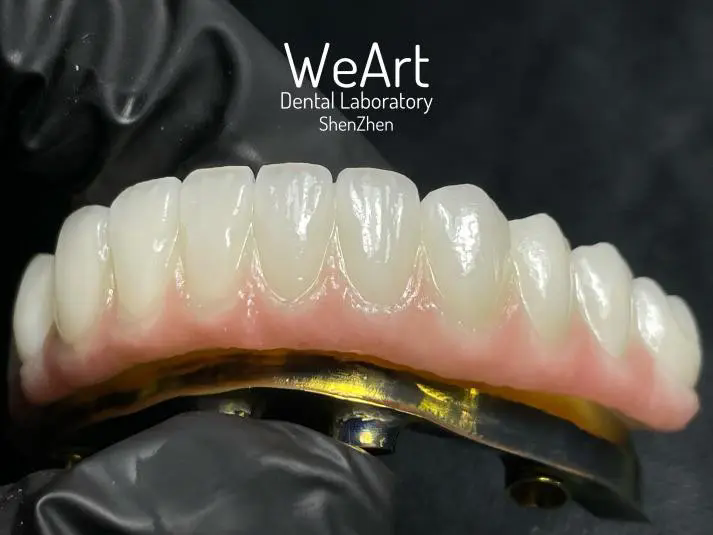What Makes Implant Restoration the Future of Dental Health?
2025-10-13
Implant restoration is a modern dental procedure designed to replace missing teeth with artificial roots and crowns that look, feel, and function like natural teeth. Unlike removable dentures or traditional bridges, implant restoration provides a permanent, stable, and aesthetic solution that integrates directly with the jawbone. This process not only restores chewing ability and speech clarity but also helps prevent bone loss and maintains facial structure integrity.
In today’s dental landscape, implant restoration has become a transformative innovation that redefines oral rehabilitation. As more people seek long-term solutions for missing teeth, the global implant restoration market continues to grow rapidly. Its success lies in advanced biomaterials, precise surgical techniques, and digital technologies such as 3D imaging and CAD/CAM systems, which ensure optimal precision and natural-looking results.
Key Product Specifications and Technical Parameters
| Parameter | Description |
|---|---|
| Material | Titanium alloy (Grade 5) or Zirconia ceramic for high biocompatibility |
| Surface Treatment | Sandblasted and acid-etched for optimal osseointegration |
| Connection Type | Internal hex, conical, and Morse taper connections |
| Abutment Options | Straight, angled, and customized abutments (CAD/CAM milled) |
| Implant Diameter Range | 3.0 mm – 5.5 mm |
| Implant Length Range | 6 mm – 16 mm |
| Torque Resistance | Up to 45 Ncm |
| Prosthetic Compatibility | Compatible with major dental systems |
| Certifications | CE, ISO 13485, FDA approved |
| Lifespan | 15+ years with proper care and maintenance |
These parameters demonstrate the precision and scientific engineering behind modern implant restoration systems. High-grade titanium ensures strong biocompatibility, while advanced surface modifications enhance bone bonding. Additionally, multiple abutment designs offer tailored solutions to meet diverse clinical requirements, from single-tooth restoration to full-arch rehabilitation.
Why Implant Restoration Is a Game-Changer in Modern Dentistry
Key Benefits of Implant Restoration
-
Enhanced Aesthetics: Implants replicate the natural contour and translucency of teeth, delivering a seamless smile.
-
Functional Restoration: Patients regain normal chewing efficiency and speech clarity.
-
Bone Preservation: The implant’s stimulation of bone tissue prevents resorption and jawbone deterioration.
-
Long-Term Value: Though the initial investment may be higher, implants offer decades of service with minimal maintenance.
-
Comfort and Stability: Fixed in the jawbone, implants eliminate the discomfort and shifting associated with removable dentures.
-
Improved Oral Health: Unlike bridges, implants do not require the reduction of adjacent teeth, preserving natural tooth structure.
The Science Behind the Success
Modern implant systems rely on micro-thread design, advanced surface topography, and precision-engineered abutments that distribute occlusal forces evenly. Digital workflow technologies—such as intraoral scanning and 3D bone mapping—allow for exact implant placement and customized prosthetic design.
Moreover, the integration of biocompatible coatings and nanotechnology continues to push the boundaries of implant longevity and healing efficiency. The result is a minimally invasive, highly predictable treatment outcome that significantly improves patient satisfaction.
How Implant Restoration Is Shaping the Future of Oral Rehabilitation
The future of implant restoration lies in digital precision, biomimetic design, and sustainable materials. As dental technology evolves, the synergy between computer-guided surgery, 3D printing, and artificial intelligence allows for near-perfect restoration outcomes.
Emerging Trends in Implant Restoration
-
Digital Implant Workflow: Fully digitalized treatment—from virtual planning to CAD/CAM prosthetics—reduces chair time and human error.
-
Immediate Loading Implants: Patients can receive implant placement and restoration in a single visit, improving convenience and efficiency.
-
Zirconia Implants: Metal-free alternatives gaining popularity for patients with titanium allergies and aesthetic concerns.
-
3D Printed Surgical Guides: Improve precision in implant placement, ensuring optimal angulation and bone utilization.
-
Regenerative Materials: Innovations in bone grafting materials and bioactive membranes accelerate healing and enhance osseointegration.
-
Sustainability Focus: Eco-friendly sterilization processes and recyclable packaging are becoming integral to modern dental manufacturing.
Why Dental Professionals Choose Implant Restoration
Dentists and prosthodontists favor implants for their versatility and long-term predictability. With modern implant restoration systems, professionals can customize each case based on bone density, soft tissue conditions, and aesthetic goals. This flexibility ensures that patients receive a tailored, functional, and visually harmonious result.
Furthermore, dental implantology continues to integrate digital platforms for real-time diagnostics, surgical navigation, and outcome simulation—ensuring consistency and safety across all clinical settings.
Common Questions About Implant Restoration
Q1: How long does the implant restoration process take?
The entire process typically spans three to six months, depending on individual healing rates and bone quality. The initial stage involves implant placement, followed by a healing phase for osseointegration. Once the implant has fused with the bone, an abutment and crown are attached to complete the restoration. Immediate-load implants, however, can significantly shorten this timeframe, allowing for same-day restoration in select cases.
Q2: Is implant restoration suitable for everyone?
Most adults with healthy gums and adequate bone density are good candidates for implant restoration. However, patients with uncontrolled diabetes, severe bone loss, or certain systemic conditions may require pre-treatment assessments or bone grafting. A comprehensive dental evaluation and 3D imaging help determine the suitability and customized treatment plan for each patient.
The Future of Implant Restoration and the Role of WeArt
The trajectory of implant restoration technology is clear—precision, personalization, and performance will define its next era. From the evolution of bioengineered materials to the integration of digital diagnostics, the future promises minimally invasive procedures and faster healing times without compromising strength or aesthetics.
WeArt stands at the forefront of this innovation. With a commitment to excellence in dental materials engineering and restorative design, WeArt’s implant restoration solutions deliver uncompromising quality and reliability. Each component is designed to enhance biological integration, aesthetic harmony, and clinical predictability, ensuring optimal outcomes for patients and practitioners alike.
For dental professionals and clinics seeking to elevate their restorative capabilities, WeArt offers comprehensive implant systems that align with the latest international standards and digital workflow technologies.



